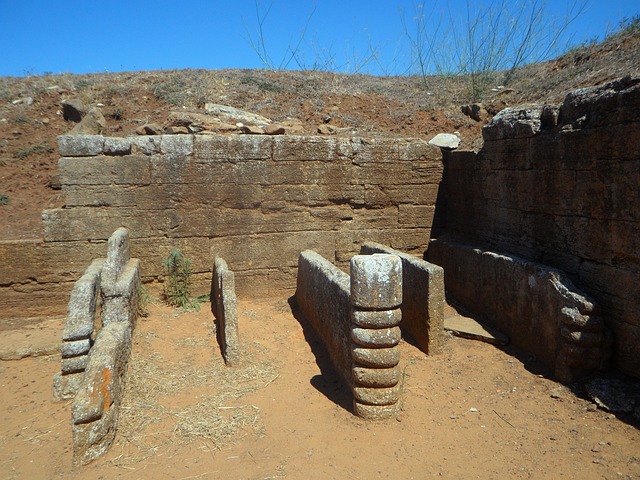By Tim Lambert
The first civilization in Italy was the Etruscan, which arose about 800 BC. The Etruscans built cities on a grid pattern. Some of these cities still exist (including Arezzo, Chiusi, Cortona, Perugia, and Cerveteri). The Etruscans were also engineers who drained marshes and built roads. They were also skilled artists.
The Etruscans made terracotta sculptures and worked in bronze. Their craftsmen also made jewelry of gold and silver. Etruscan artists painted frescoes on the walls of rich people’s tombs. They also painted pottery.
Like other ancient peoples, the Etruscans had a tiny upper class and a large class of slaves. No doubt a slave’s life was horrid and slave rebellions were not uncommon. Between the upper class and the slaves was a class of poor freemen. Upper-class Etruscans lived in splendid houses with many rooms arranged around a courtyard. They had luxurious furniture. Poor Etruscans lived in simple huts of wood and brick.
Most of the Etruscans lived by farming. They grew barley, wheat, and pulses. They also grew grapes and olives. Craftsmen included blacksmiths, bronze smiths, potters, goldsmiths, shoemakers, tanners, and leather workers.
The Etruscans were polytheists (they worshiped many gods) including Tinia the ruler of the gods and god of thunder, Fufluns the god of vegetation, Nethuns the god of water and Tiv the moon god.
By 600 BC the Etruscans came to rule central Italy, including Rome. They also had a powerful navy.

However, in 510 BC the Romans rebelled and they gradually encroached on the Etruscan territory. The last Etruscan city fell to the Romans in 265 BC. The Etruscans were influenced by the Greeks, with whom they traded. About 750 BC the Greeks established a colony on the island of Ischia in the Bay of Naples. Later they created colonies in Sicily such as Catania and Messina. They also founded colonies on mainland Italy such as Reggio Calabria.
Last revised 2025